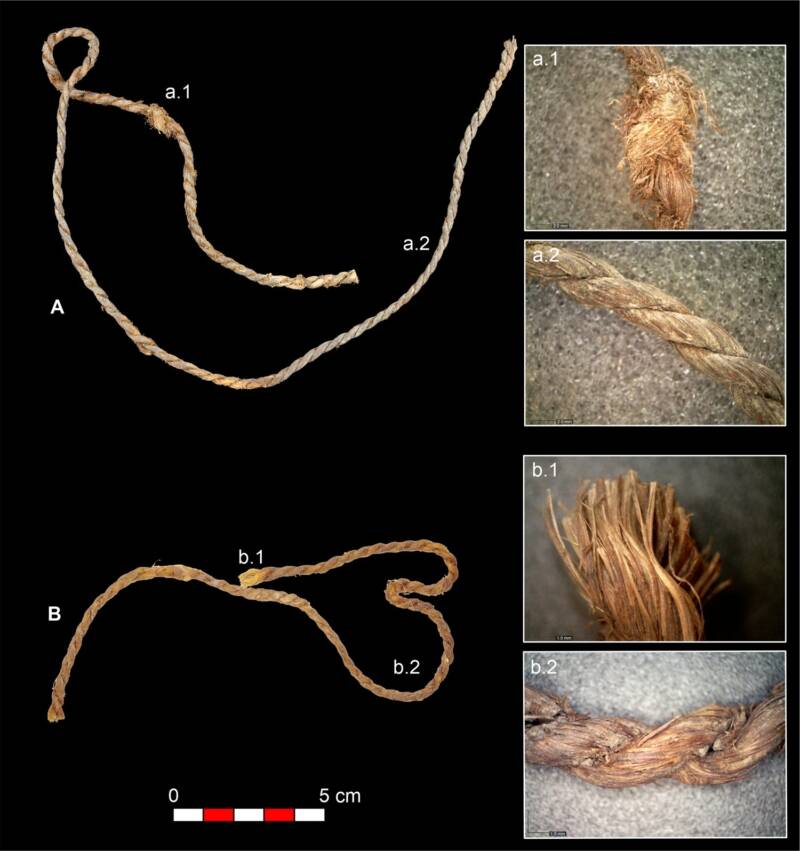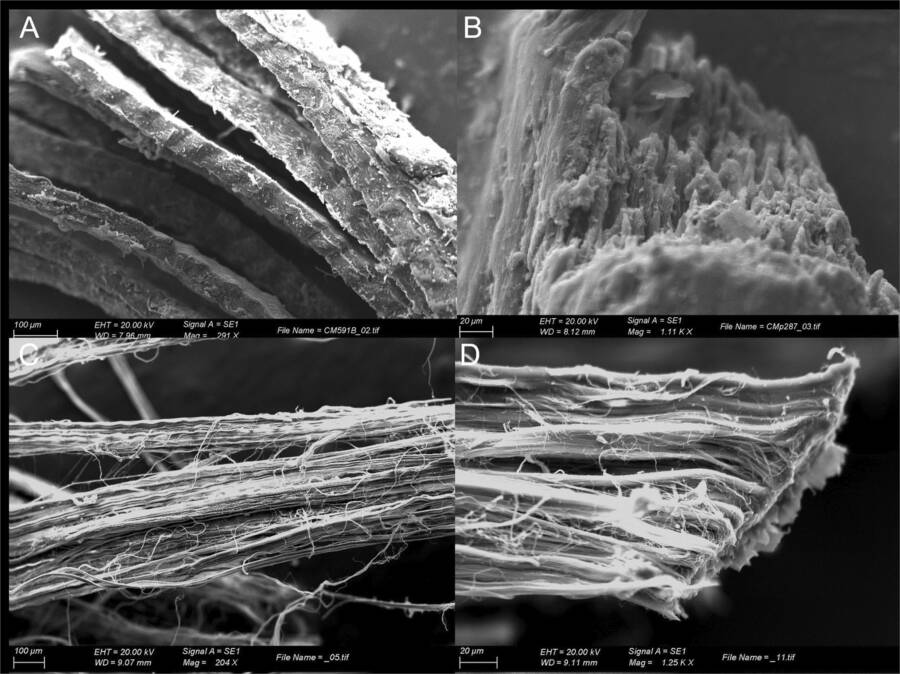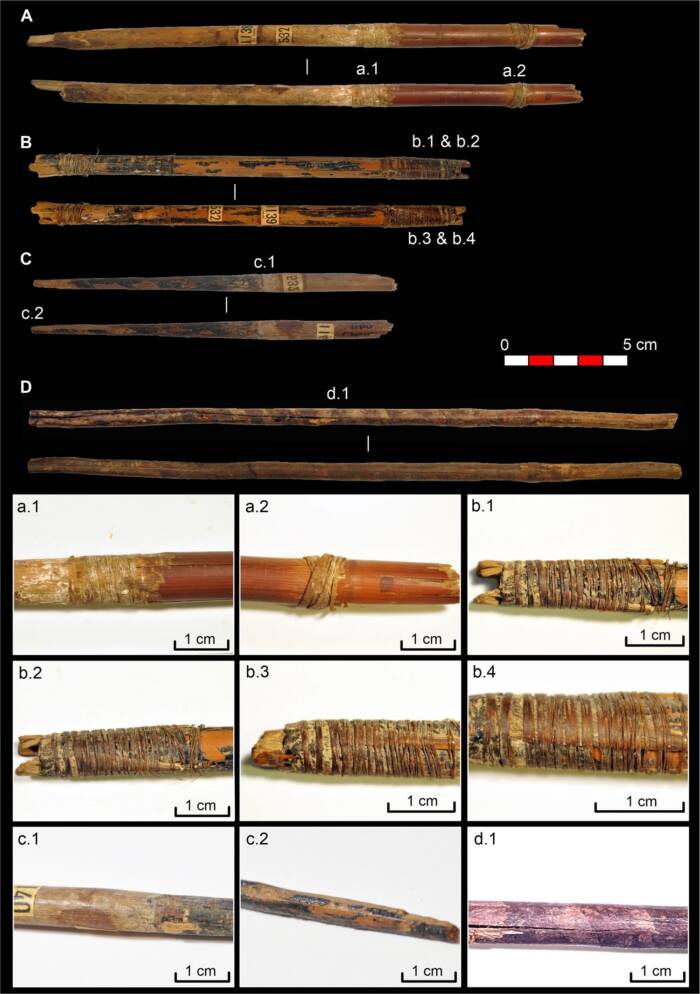The bowstrings are made from the tendons of goats, boars, and roe deer that were dried and twisted together 7,000 years ago.
Bertin , I. , Martín - Seijo , M. , Martínez - Sevilla , F. et al . These bowstrings are 7,000 years older and made from dried animal tendons .
A recent study from the Universitat Autònoma de Barcelona ( UAB ) has pour forth fresh light source on the technique and material used for archery during the Neolithic catamenia .
member of the research team dissect a diverseness of artifacts from the Cueva de Los Murciélagos in Albuñol near Granada . Among the discoveries were 7,000 - year - old bowstring made of creature tendons that have now been identified as the previous ever found in Europe .

Bertin, I., Martín-Seijo, M., Martínez-Sevilla, F. et al.These bowstrings are 7,000 years old and made from dried animal tendons.
The results of the study were published in the journalScientific Reports , and experts are stun by the unprecedented stage of precision and proficient control possessed by Neolithic craftspeople .
Analysis Of 7,000-Year-Old Bowstrings Reveals Remarkable Neolithic Craftsmanship
This recent discipline was top by a team from UAB . Per a translatedstatementfrom the university , the organic persist in the Cueva de Los Murciélagos in Albuñol were exceptionally well preserved , making them perfect for this sort of multidisciplinary analysis .
Much of what the squad probe was Neolithic archery equipment , which has now been thoroughly identified and document . Among the discovery were various arrows uphold with their original feathers , stringy corpse , and two bowstrings made of fauna tendons . The artifacts are about 7,000 years old , make the bowstrings the oldest ever discover in Europe .
Bertin , I. , Martín - Seijo , M. , Martínez - Sevilla , F. et al . A close - up view of the tendons used in the bowstrings .

Bertin, I., Martín-Seijo, M., Martínez-Sevilla, F. et al.A close-up view of the tendons used in the bowstrings.
“ The identification of these bowstring mark a crucial footmark in the subject field of Neolithic implements of war . Not only have we been able to confirm the consumption of animal tendons to make them , but we have also been capable to identify the genus or species of beast from which they come , ” allege UAB investigator Ingrid Bertin .
Bertin explained that depth psychology revealed tendons from goat , boars , and hard roe deer were used to craft the bowstrings , which were twisted together until they were a sufficient distance .
“ With this proficiency , strong and flexible strings could be made to meet the pauperization of experient archers . This degree of preciseness and technical subordination , where every detail count , take the stand to the olympian knowledge of these Neolithic artificer , ” add together fellow UAB investigator Raquel Piqué .

Bertin, I., Martín-Seijo, M., Martínez-Sevilla, F. et al.The Neolithic arrow shafts were made from olive wood, reed, and willow — a unique combination.
While the bowstrings were a large focus of the survey , they were far from the only enthralling find made during the analytic thinking .
Other Discoveries Provide A New Perspective On Southwestern Europe’s Neolithic Groups
Analysis of the pointer shaft further unveil , for the first time , the use of olive Sir Henry Wood and Walter Reed . It had long been theorized that reeds were used for pointer qualification in prehistorical Europe , but until now this had yet to be confirmed .
Even more amazingly , though , the analytic thinking bump that Neolithic groups had meld the John Reed with olive wood and willow tree , which experts described as a especially interesting choice of stuff .
Bertin , I. , Martín - Seijo , M. , Martínez - Sevilla , F. et al . The Neolithic arrow shafts were made from olive wood , reed , and willow — a unique combination .
“ This integration offers a hard and dense front division , complemented by a light rearward surgical incision , which importantly amend the ballistic properties of the arrows , whose tips are made of woodwind without Harlan F. Stone or bone projectiles , ” Bertin said . “ Future experiment will be able to elucidate whether these arrows could have been used for hunt or close - range combat , or whether they could have been non - deadly arrow . ”
The pointer shaft of light , once they were make out , were then coated with birch slant , a cloth obtained by controlled heating of birch barque . It served as a protective bed — and had an aesthetic welfare , as well .
Overall , these findings establish a much more sophisticated understanding of craftsmanship during the Neolithic period than antecedently think . This newfangled linear perspective shows that our ancient ancestors were more advance than typically portrayed .
“ The findings contribute to enrich the understanding of the craftiness praxis and day-after-day spirit of prehistorical societies and overt avenues for the cogitation of ancient weapons , by unveil methods and materials that can be investigated in other European Neolithic archaeologic land site , ” Piqué bring .
“ In addition , they provide a safe understanding of the symbolic sphere linked to these grave good from a funerary circumstance , such as that of La Cueva de Los Murciélagos . ”
After reading about the analysis of Europe ’s oldest bowstrings , go inside the discovery of theworld ’s honest-to-god cave paintings . Then , learn about theoldest human virusesever find in ancient remains .